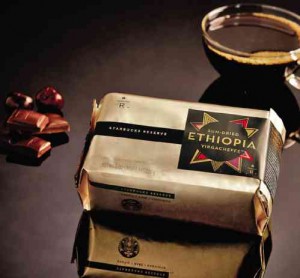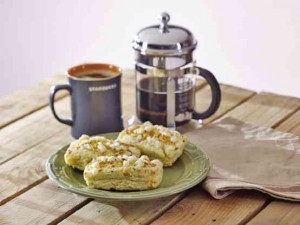‘Exotic’ Starbucks Reserve is here
MANILA, Philippines—There was a time, not too long ago, when it was unthinkable for ordinary Filipinos to fork out over P100 for a cup of coffee.
And it wasn’t because local consumers were not big on coffee. No, the Philippines has decades upon decades of a strong coffee culture and a coffee-growing industry.
But for as long as people can remember, a cup of coffee was viewed as a cheap commodity rather than a luxury product.
Enter global coffee chain Starbucks—which opened its doors in the Philippines in 1997 and Filipino consumers soon became comfortable with the idea of paying up to five times more for a cup of coffee than what they were accustomed to.
Sixteen years later, Starbucks is about to push the envelope and test the buying appetite of the local market further.
Starbucks recently launched the world’s most exotic, rare and exquisite “Starbucks Reserve” coffees in the Philippines, bringing some of the most exquisite coffee beans the world has to offer.
According to the company, Starbucks Reserve coffees will be initially available, in limited quantities, exclusively at five Starbucks stores in the Philippines.
These Starbucks stores will feature a Starbucks specialty coffee bar where customers are able to discover the unique flavors of each Starbucks Reserve coffee.
Starbucks Reserve is a category of ultra-premium coffees that represent the pinnacle of Starbucks coffee perfection and passion.
“What we’re offering is a premium experience for people who love coffee,” says Noey Lopez who is the chief operating officer of Rustan Coffee Corp.—the firm that holds the Starbucks franchise for the Philippines.
“We believe Filipinos have become more discerning and are now ready for this more premium coffee experience,” he adds.
For this new venture, Starbucks introduced four Starbucks Reserve coffees in the Philippines: Sun-Dried Ethiopia Yirgacheffe; Finca Nuevo Mexico; Sumatra Blue Batak; and Zambia Peaberry Terranova Estate.
All of them are rare and extremely limited coffees, each hand-picked for their distinctive flavors and unusual locales around the world.
“These are rare coffee varieties and some of them may be available only for a limited time, depending on whether our buyers are able to source more,” Lopez says, explaining that the types of coffee that Starbucks Reserve will offer will change and evolve from time to time.
These high-end coffees are available exclusively at the flagship Starbucks Reserve stores along Tomas Morato Street on Quezon City.
But Lopez says that four other Starbucks Reserve stores would soon follow—in Forbes Town; Keyland Centre; Central Square; and Signa.
“Two in Bonifacio Global City and two in the Makati central business district,” the Rustan Coffee chief says. “This is where we expect our clientele [for Starbucks Reserve] to come from, initially.”
Lopez explains that the very nature of the product they sell means the coffee takes “a little longer to prepare,” as the resident coffee master—all staffers of Starbucks Reserve stores are of “coffee master” rank—has to prepare the brew manually… and explain the entire process to the client, if requested.
To enhance the premium experience of their coffee drinkers, Starbucks invested in differentiating the overall look and feel of their Starbucks Reserve stores from normal branches. The company also invested more in its personnel, making sure they have a higher level of training, as well as social skills, than normal Starbucks partners.
For all the trouble that they go through (and the cost of the rare and exotic coffee), coffee connoisseurs should expect to pay an average of 30 percent more than their regular Starbucks prices.
But the premium experience is worth it, Lopez declares.
In addition, customers can also brew the whole Starbucks Reserve coffee bean with a coffee press at home to enjoy the exquisite flavors it offers.
Since it opened its first store at 6750, Ayala Avenue, Makati City, in 1997, Starbucks has been building an authentic and global coffee culture through its passion for promoting coffee culture and expertise, its care for the community and ability to consistently deliver a unique Starbucks experience to customers across the Philippines.
Starbucks currently operates more than 225 stores in more than 30 cities across the Philippines.
“The market is growing, and I think Filipinos are ready for the premium product and service that we will offer,” Lopez says.
At the rate the coffee franchise is expanding, he’s probably right.
RELATED STORIES
Have you had your coffee today?
‘One cup of coffee, one customer at a time’


